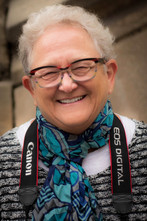The Church of Gold
- Artful Journeys
- Jan 31, 2021
- 3 min read

Each week, Joe Marchio, Artful Journeys' music expert, guides us through the western world's most famous music venues. From churches to movie houses, Joe enlightens us to how these buildings are so successful at showcasing different musical genres.
For our first lecture in the series, Joe introduced San Marco Basilica in Venice. With its gorgeous Byzantine design, this was a beautiful place to start!
Historically, a basilica is an architectural style from ancient Rome and pre-Christian Italy. A rectangular building, basilicas contain massive columns that end with a rounded, raised area called an apse. Initially, the building style would have been for public use, most often a court and the judge would sit on the raised platform. Early Christians adopted the building style for their churches and replaced the judge's seat with the altar. The apse, "a little gate-way to heaven," is often decorated with stars and angels. When receiving communion, you travel from this apse, a representation of heaven, to receive the body of Christ and then travel back to the earthly realm.

The term "basilica" is also an official designation: it is a title of honor given by the Pope, either because of the building's antiquity or its role as an international center of worship, usually because of their association with a significant saint or an important historical event. San Marco is not just a basilica but also a cathedral, as it is the seat of the bishop of Venice.
San Marco was built in 829 to house the body of St. Mark, but the original building burned to the ground in 976; in 1063, the construction of the present basilica began. This five-domed confection is Byzantine in design. Often referred to as "The Church of Gold," it shines and glimmers with mosaic tiles of ground gold. Over the centuries, additions of sculpture and ceremonial objects have elevated the church's feeling of opulence.

So who was St. Mark? Mark the Evangelist is credited as the author of the Gospel of Mark. Mark is said to have traveled to Alexandria about 19 years after the ascension of Jesus and founded the Church of Alexandria, one of the most important episcopal sees of early Christianity. After Mark died, the story is that two Venetian merchants stole his body, hiding it in a barrel of pork fat to smuggle the body out of Alexandria to Venice, where his body supposedly is housed in the altar to this day.
If the San Marco Basilica intrigued you, join us for next week's Armchair Journey with Joe when he takes us to Vienna!
MUSIC AND ARCHITECTURE
January 8 – March 26, 2021
Different music genres belong in buildings that enhance the music–in churches and cathedrals, symphony halls, theaters, opera houses, movie theaters, and, yes, even in orphanages. In a new Armchair Journey series, Joe Marchio will discuss the relationship between different types of music and the architectural structures. Click here to join us!
Joe Marchio, Instructor & Guide

Joe Marchio is a graduate of the College of Wooster, where he earned both a Bachelor’s degree in organ performance and a Bachelor of Arts in religious studies. He earned a Master of Divinity degree at the Yale University Institute of Sacred Music, and a Master of Music degree in choral conducting at the Boston Conservatory. Joe became Music Director of the Chatham Chorale in 2010. He is also the Pastor and Director of Music of the First Congregational Church of Chatham.
Written by
Joan Hill, Artful Journeys Director and
Carla Bohnett, Artful Journeys Co-Director







Comments